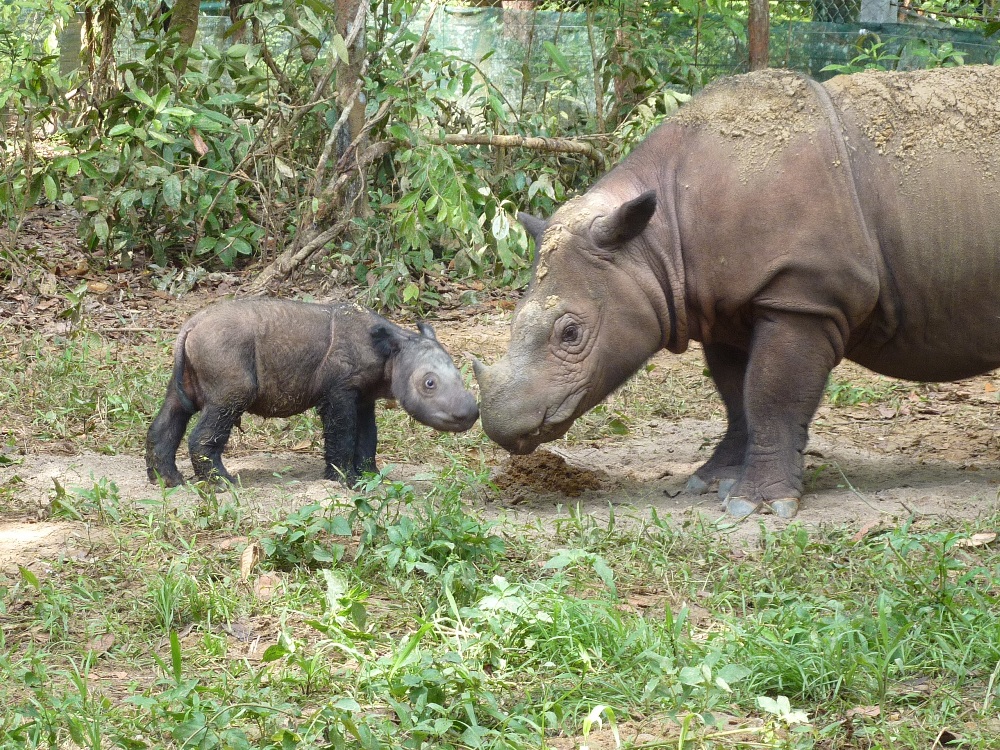Rare Sumatran rhinoceros in two reserves in Sabah, Malaysia appear to be no more.
style="display:block; text-align:center;" data-ad-layout="in-article" data-ad-format="fluid" data-ad-client="ca-pub-8151337340296717" data-ad-slot="5584281553">
This was after recent surveys failed to detect any.
The species is suspected to have become extinct in the wild in the country.
No evidence of survival
In a question-and-answer session held in a state assembly sitting on April 17, 2019, Sabah's Tourism, Culture and Environment Minister Christina Liew revealed that there have been no sightings of the critically endangered rhinoceros, reported The Star.
The news comes following a study conducted at the Ulu Segama Forest Reserve and Tabin Wildlife Reserve in Lahad Datu.
The study, part of the ongoing Faunal Survey of Sabah started in 1978, aims to assess the population of Sumatran rhinoceroses found in both aforementioned reserves, as well as the Ulu Malua Forest Reserve.
All three areas were previously identified to contain populations of the megafauna.
style="display:block; text-align:center;" data-ad-layout="in-article" data-ad-format="fluid" data-ad-client="ca-pub-8151337340296717" data-ad-slot="5584281553">
Liew's answer during the session was made in response to a question on whether there were any new reports on the study's findings since 2016.
Liew also mentioned that methods utilised in the survey to detect the animals included forest exploration and camera traps, according to Malay Mail.
However, no rhino footprints or any photographs of the creatures were recorded.
80 individuals left in Indonesia
Despite the unfortunate news, Liew said that she remains confident that the habitats in the reserves remain conducive for Sumatran rhinos, "even though the rhino population no longer exists", reported The Star.
This piece of news might not come as a surprise to some.
The Sumatran rhinoceros was actually declared extinct in Malaysia in 2015, although there was still the belief that a few individuals existed in the forests.
Liew's revelation might have been the nail in the coffin for Malaysia's rhino population.
style="display:block; text-align:center;" data-ad-layout="in-article" data-ad-format="fluid" data-ad-client="ca-pub-8151337340296717" data-ad-slot="5584281553">
Outside of Malaysia, an estimated 80 Sumatran rhino individuals are left in the wild.
The creatures mainly inhabit fragmented pockets in Indonesia.
The species, known for their hairy exterior and ability to "sing", is one of only two species of rhinoceros in Asia, and one in five rhinoceros species left in the world.
 Photo from IUCN
Photo from IUCN
Their populations have been decimated by poaching for their horns, and habitat destruction to make way for palm oil and urban development.
style="display:block; text-align:center;" data-ad-layout="in-article" data-ad-format="fluid" data-ad-client="ca-pub-8151337340296717" data-ad-slot="5584281553">
Conservation efforts enough?
With the Sumatran rhino on the brink of extinction, conservation efforts such as the Sumatran Rhino Rescue have been implemented.
The project, a collaboration between the Indonesian government, National Geographic, International Rhino Foundation and other conservation groups, aims to establish rhino sanctuaries and carry out specialised breeding programmes.
However, a report by Mongabay details the inaction by the Indonesian government for a separate breeding project that hopes to use in vitro fertilisation (IVF) to improve captive Sumatran rhino populations.
The project, which was started in 2013, was allegedly stalled repeatedly when Indonesian authorities held out against sending their rhino's sperm to Malaysia for IVF.
Additionally, Indonesia reportedly reiterated that the eggs that Malaysia were shipping over to them weren't viable as well.
Top photo from Kat Jenkinson, Flickr
If you like what you read, follow us on Facebook, Instagram, Twitter and Telegram to get the latest updates.
